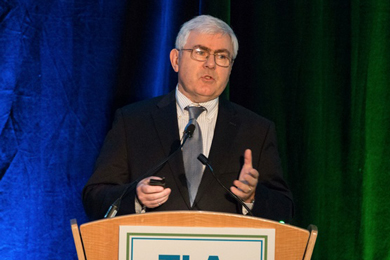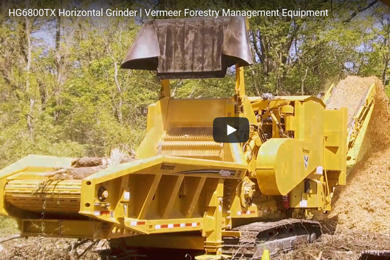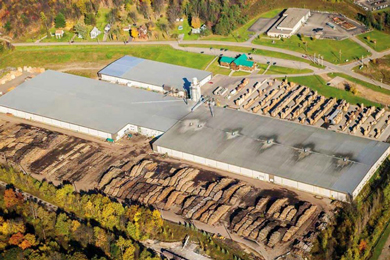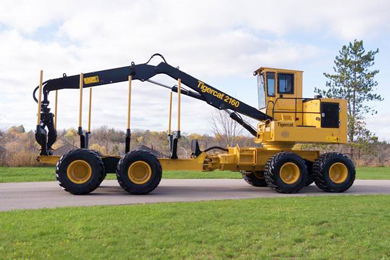Daimler Trucks North America (DTNA) recently announced that David Carson, currently president of Freightliner Custom Chassis Corporation (FCCC), has been appointed president of Western Star Trucks and chief diversity officer of DTNA. Carson succeeds Kelley Platt who has been promoted within the Daimler AG global organization to president and chief executive officer of Daimler’s truck joint venture Beijing Foton Daimler Automotive Co., Ltd. (BFDA) in China.
“While we will miss Kelley’s leadership and her significant contributions as a member of the Daimler Trucks North America Operating Committee, we are confident that David’s dedication and proven track record as a leader position him well as the new leader of Western Star as we look to the future for the vocational truck brand,” said Roger Nielsen, president and CEO, Daimler Trucks North America.
David Carson, President, Western Star Trucks & Chief Diversity Officer, Daimler Trucks North America
In his role leading the Western Star team and the strategic direction for the company’s commitment to diversity and inclusion, Carson will become a member of the company’s Operating Committee. Carson was appointed to his current role as president of FCCC in 2015, where he oversaw engineering, operations and sales & marketing for DTNA’s chassis business.
Under his leadership, FCCC continued its development of product offerings and enhancements in the school bus, RV and walk-in van segments, leading to record performance in 2016. He also led efforts to significantly invest in and expand on the brand’s operations, including construction of a new logistics center and chassis loading facility.
Previously, Carson served in a variety of leadership roles, most recently as the company’s general manager of human resources responsible for all human resource matters, including negotiations with labor unions. Prior to joining DTNA in 2001, Carson built extensive experience leading operations for an industry-leading automotive supplier and a global technology company.
Carson earned a Bachelor’s degree in Psychology and a Master’s degree in Industrial Relations from the University of Wisconsin-Madison.
Kelley Platt, President & CEO, Beijing Foton Daimler Automotive Co. Ltd.
Kelley Platt will become president and chief executive officer of Beijing Foton Daimler Automotive Co. Ltd. In this role, Kelley will report to Sven Ennerst, Truck Board Member for Procurement, R&D, and newly appointed for China.
“Kelley’s leadership and dedication to our customers and to continuously improve will continue to be integrated into our company as we move forward,” said Nielsen. “We wish her the best of luck in China where she will bring a wealth of experience with her.”
Under the leadership of Kelley Platt, Western Star has set sales and market share records. Previously, from 2010 to 2015, Platt served as the president and CEO of Thomas Built Buses (TBB) in High Point, N.C., where she contributed to TBB attaining leadership of the North American school bus market. While at TBB, Platt was the recipient of the Manufacturing Institute’s prestigious STEP Award, recognizing outstanding women in the manufacturing industry who exemplify leadership within their companies.
Platt started her Daimler career in 1989 as a manager in the treasury department. She founded the Business Excellence Group in 2006, which first introduced the company to the idea that continuous improvement and LEAN principles could be applied in the office environment in the same manner as was already proving successful in the manufacturing arena. She has been a strong advocate of diversity and inclusion both for DTNA and on the larger global Daimler landscape.
Platt holds a Bachelor’s of Science degree in Economics from Colby College and a Master’s of Business degree in Operations and Finance from Duke University’s Fuqua School of Business.
About Beijing Foton Daimler Automotive
Beijing Foton Daimler Automotive Co., Ltd. (BFDA) is a 50:50 joint venture of Daimler and Chinese manufacturer Beiqi Foton Motor Co., Ltd. BFDA produces medium- and heavy-duty trucks under the Auman brand, with the first jointly-produced Auman truck rolling off the assembly line in 2012. A new engine plant has been built next to BFDA’s headquarters in Beijing’s Huairou District, with the first localized Mercedes-Benz OM457 heavy-duty engine produced there in 2015.
About Western Star Trucks
Western Star Truck Sales, Inc., headquartered in Portland, Ore., produces tough custom trucks for highway and vocational applications. Western Star is a subsidiary of Daimler Trucks North America LLC. Daimler Trucks North America produces and markets Class 5-8 vehicles and is a Daimler company, the world’s leading commercial vehicle manufacturer.
About Daimler Trucks North America
Daimler Trucks North America LLC, headquartered in Portland, Ore., is the leading heavy-duty truck manufacturer in North America. Daimler Trucks North America produces and markets commercial vehicles under the Freightliner, Western Star, and Thomas Built Buses nameplates. Daimler Trucks North America is a Daimler company, the world’s leading commercial vehicle manufacturer.













